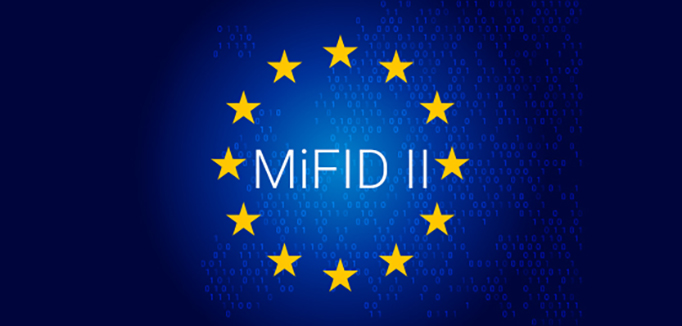The Markets in Financial Instruments Directive, or MiFID, is a finance regulation, drafted in 2004 in the European Union. The goal of MIFID was to increase transparency and fairness in trading by establishing a common, robust regulatory framework that assures equal disclosure and equal protection to investors in all EU member countries.
Its initial focus was on stock markets and the trading of company shares. Even before MiFID went into effect in 2007, investment firms began taking the necessary steps to assure MiFID compliance in their stock-trading business.
Then the financial crisis of 2008 hit.
The fallout from that crisis revealed a number of deficiencies in MiFID and caused many “corrections” to be made to the directive. The resulting MiFID II officially replaced the original MiFID in January 2018. In its most far-reaching revision, MiFID II extended EU regulatory oversight to over-the-counter (OTC) derivative products and many other financial instruments that previously were not within its jurisdiction. The broad changes in MiFID II have impacted a wider swath of EU investment firms, from insurance and mutual funds to banks and brokerage firms. The goal is to have all types of financial trades uniformly regulated and conducted in a fair and open process that protects investors.
MiFID continues to evolve.
This year, 2020, all aspects of MiFID II were up for review. Firms were slated to present the operational challenges they are having with MiFID compliance and their suggestions for improvement. Regulators were supposed to consider their feedback on the real-world implications of MiFID II and determine whether further adjustment is needed. The outcome is yet unknown as certain parts of the review were delayed due to COVID-19 restrictions. The European Securities and Markets Authority (ESMA) is expected to issue a full report in early 2021.
In the meantime, let’s take a closer look at what was, what is, and how MiFID compliance is affecting EU firms, especially small and mid-size companies who may be overwhelmed by ever tighter regulation.
MiFID Compliance: In the beginning…
The regulations in MiFID II comprise more than 1.5 million paragraphs of text. It is doubtful that even the EU regulators understand it all, much less the firms that must comply with the details of its directives.
In the beginning, MiFID wanted to bring financial intermediaries under a common regulatory framework in order to protect investors from less-than-scrupulous securities trading practices and from stock trades that were not beneficial to them. This would be done by increasing transparency for the investor through strict disclosure and record-keeping rules that would in turn make financial markets in the EU more efficient and customer-centric.
MiFID Compliance today
The changes enacted in MiFID II improved the original directive and shored up the weaknesses that became apparent after the worldwide financial crisis of 2008. One of the main goals was to make the EU regulatory framework, and by extension, EU financial markets, stronger and better able to withstand financial shocks originating outside the EU. This was done in a number of ways.
Third-country firms (TCFs) must also follow MiFID Compliance rules
Instead of giving TCFs the freedom to set their own levels of oversight per the regulatory rules in their nation, MiFID II now requires TCFs to adhere to MiFID trading practices when engaging with EU firms. This revision comes to correct the competitive advantage third-country finance firms had over their EU counterparts. While EU firms had to comply with the transparency and reporting rules in MiFID, TCFs were free to follow the much less stringent rules of their own nation. MiFID II leveled the playing field for any firm doing financial business in the EU.
Now that the playing field is level, TCFs are playing catch up. EU financial firms have a vast network of partners all over the world. MiFID II pulls all these partners into its regulatory jurisdiction, requiring them to ramp up technology infrastructure and processes in order to continue to do business in the EU. This is a big shift and many could not come up to speed so quickly. When MiFID II was put into effect in January 2020, only 10% of investment firms were compliant.
No free research or inducements to sell
Under MiFID II, independent and external research must be paid for. Otherwise, it cannot be accepted. Free analyses from sell-side research firms are often supplied free of charge to investment firms, inducing them to work with the sell-side firm or to advise clients toward an investment that is favorable to the sell side firm, but not necessarily to the client portfolio. Now that research transactions must be recorded and reported in full, consumers are better protected against advice that is driven by “inducements” and not by the best interest of the client.
Better record-keeping
MiFID II requires customer interactions to be recorded on all communication channels (email, phone, sms, social media, web, mobile); to be stored for longer periods of time; and to be highly accessible to customers and to auditors upon demand. Likewise, internal calls and emails related to an order must be recorded. Compliance requires significant investment in technologies to record, store and archive customer calls and transactions. Firms must also inform customers about the information they are recording/storing and how it can be made available upon request.
MiFID Compliance – one size does not fit all
MiFID II has been tough on small and medium-size firms. They often do not have the resources to invest in the data collection and recordkeeping technologies required for MiFID compliance. This is compounded by the new restriction on receiving free research, which smaller investment firms rely on. Having to pay for quality research makes it prohibitive for small firms. And it’s not just the data. Phone calls, emails, and meetings to obtain the data must also be documented. In fact, any communication that is involved in an order, no matter how far removed, must be recorded and stored. Many small firms are simply not be able to hire extra personnel to manage all these processes.
Navigating MiFID Compliance
On your way to MIFID compliance, we suggest you consider these steps.
- Carefully review the MiFID II definition of investment services, investment firms, and financial products. Your services may now be included, or could be exempt.
- Determine if current procedures for compliance are adequate. Can they be built on rather than replaced?
- Review the customer channels you currently record and how the data is stored. It is best to store all recordings and other info in one central system. If a channel is not recorded, can it be easily added? Or should it be dropped?
- Start recording internal calls and document all meetings.
Good luck!
To read more about NICE’s Compliance solutions visit our webpage.



